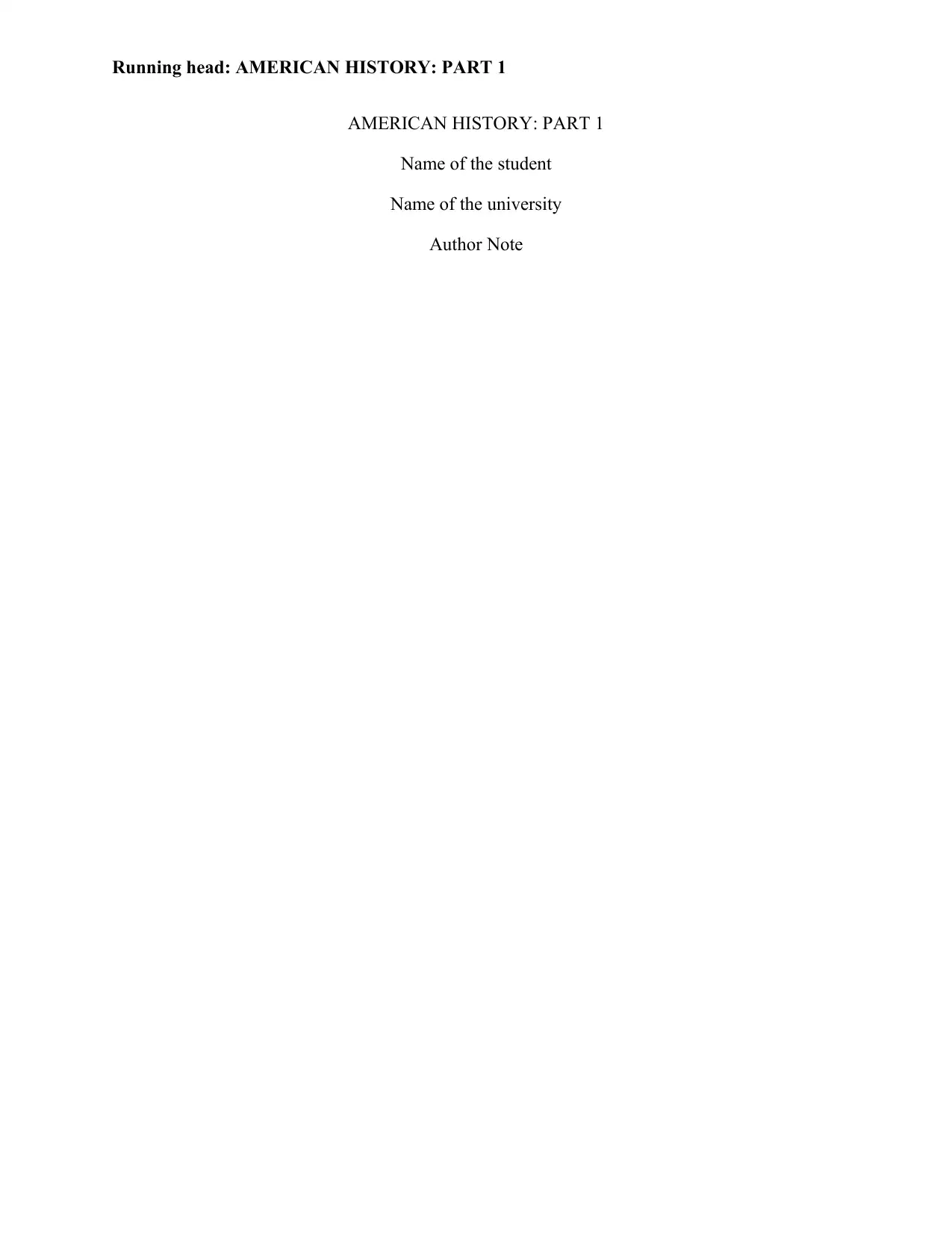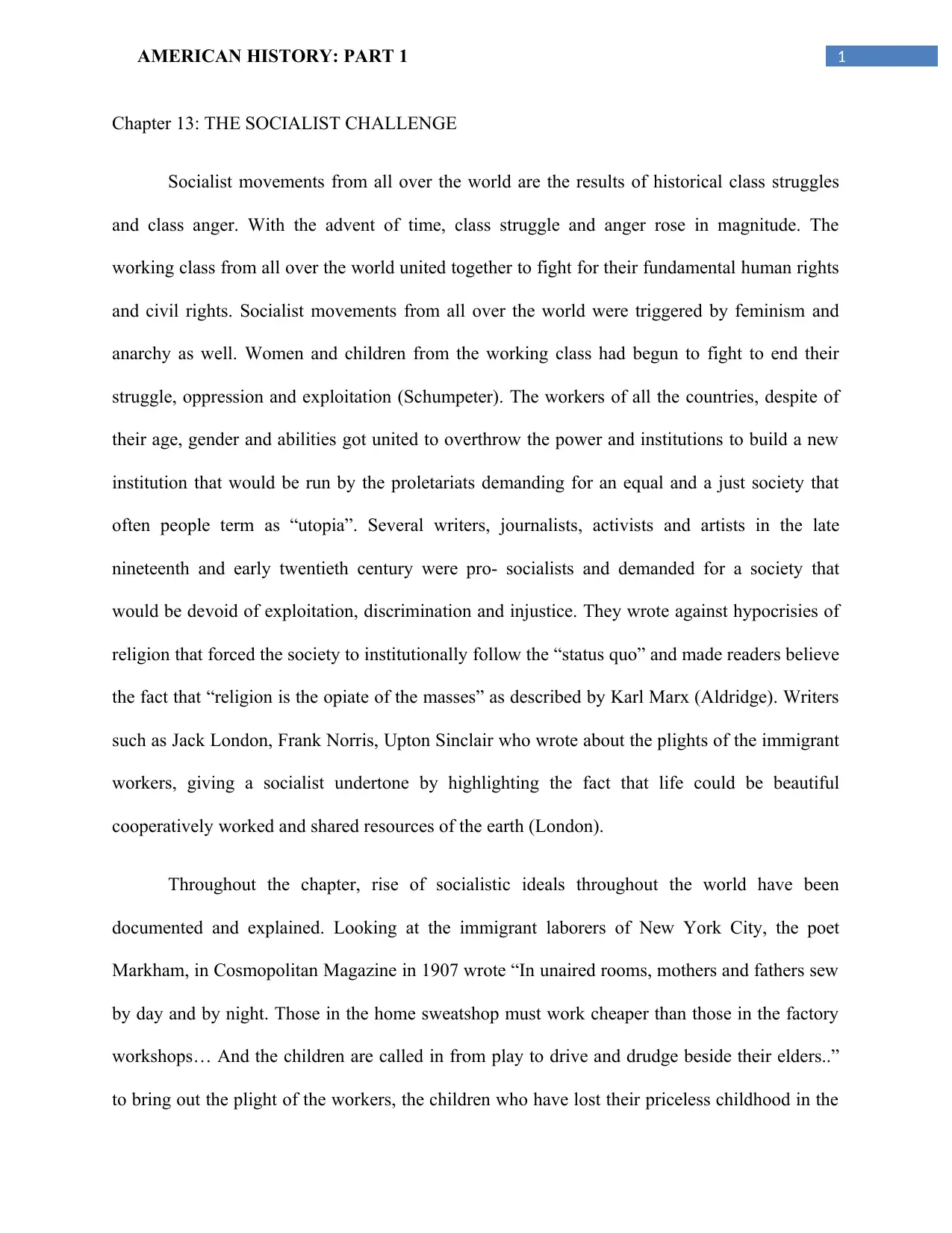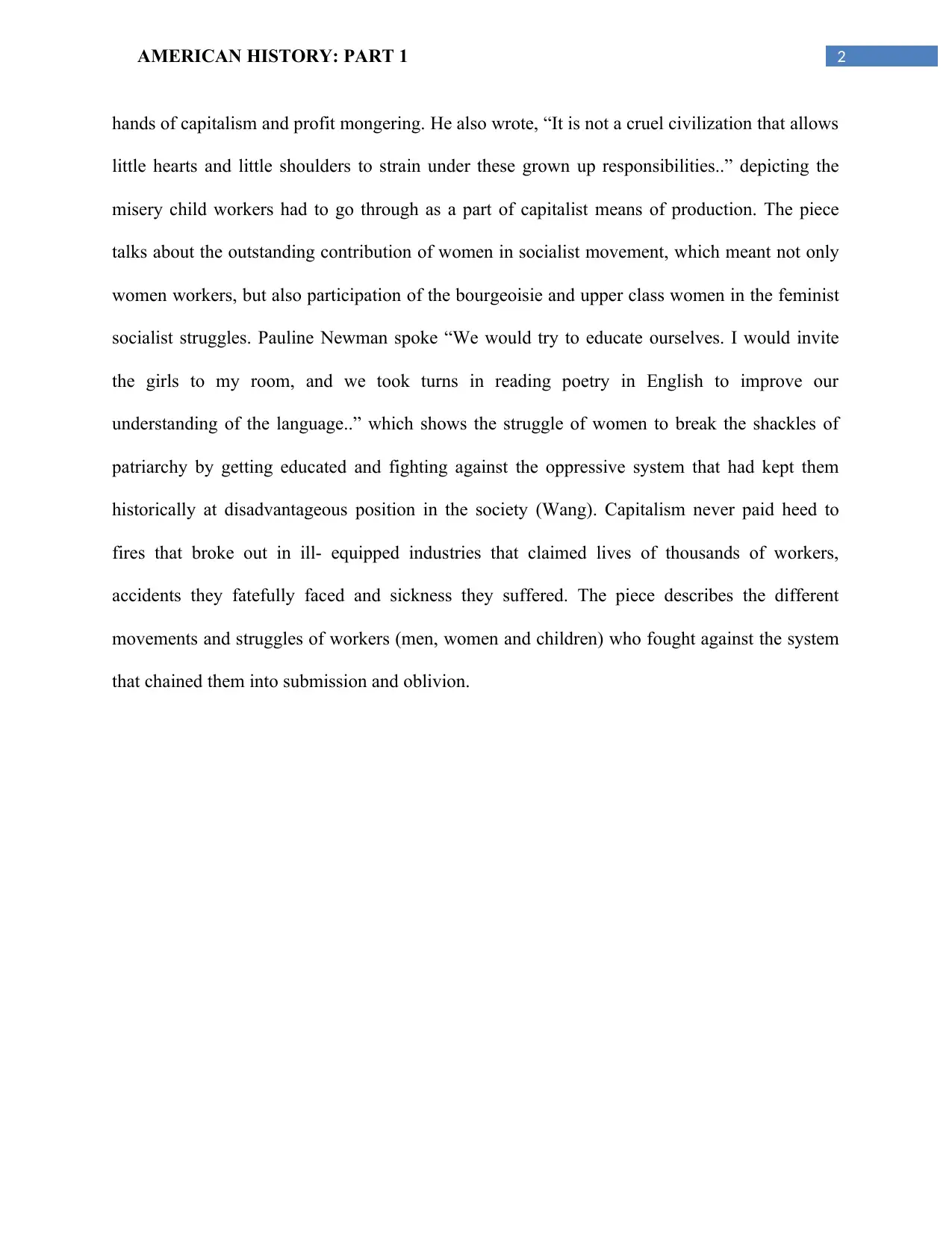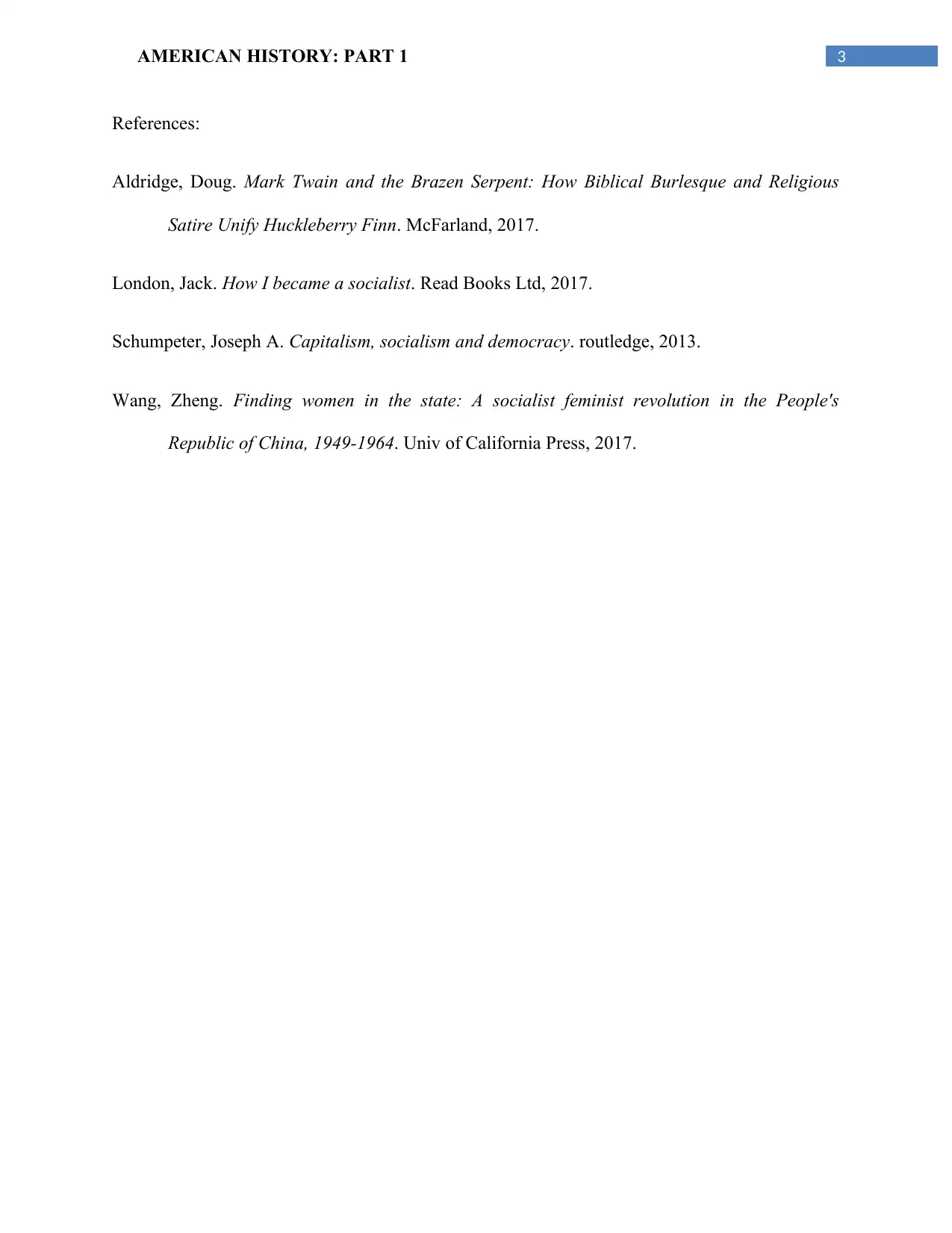American History: Exploring the Socialist Movements in Chapter 13
VerifiedAdded on 2022/08/19
|4
|715
|18
Essay
AI Summary
This essay, focusing on American History and specifically Chapter 13, delves into the rise and impact of socialist movements. It examines the historical context of class struggles and the resulting anger, which fueled the unification of the working class to fight for their rights. The essay highlights the influence of feminism and anarchy on these movements, particularly focusing on the struggles of women and children. It discusses the writings of pro-socialist authors and journalists who critiqued capitalism and advocated for a society free of exploitation and injustice. The essay provides examples of the harsh realities faced by immigrant laborers and child workers, illustrating the human cost of capitalist practices. It also explores the contributions of women in the socialist movement, emphasizing their fight against patriarchy and their pursuit of education and equality. The essay references various sources to support its analysis of the different movements and struggles of workers against the oppressive capitalist system.
1 out of 4







![[object Object]](/_next/static/media/star-bottom.7253800d.svg)